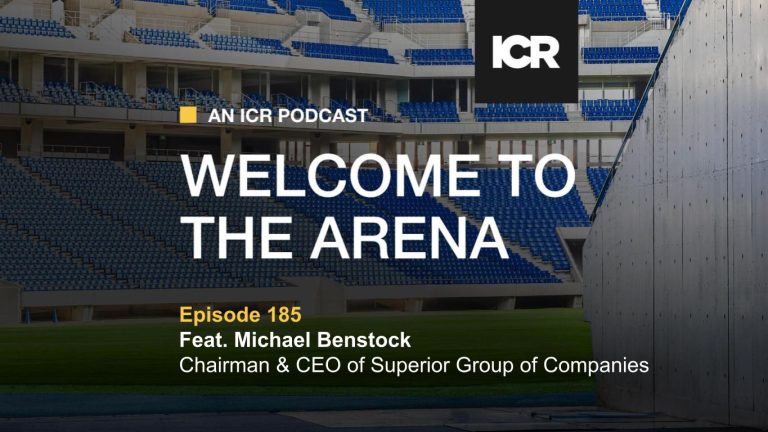
The American Association for Cancer Research (AACR) Annual Meeting, taking place in San Diego on from 5-10 April 2024, is one of the world’s pre-eminent cancer congresses, attended every year by the cancer research community. It’s where people who are at the forefront of cancer research and drug development meet to exchange ideas and discuss progress.
We asked Christina Coughlin, MD, PhD, Head of Research and Development at Avacta, what is exciting her about AACR this year, and what she thinks everyone will talk about.
1. What’s AACR like? Who attends?
AACR is one of the two must-attend congresses for the global cancer research community. Aside from the AACR congress which is focused on preclinical research and early clinical development, the American Society of Clinical Oncology or ASCO meeting typically occurs in late May-early June and focuses on all stages of clinical development in oncology. One of the positive moves at the AACR congress is the relatively recent introduction of the clinical track, allowing the preclinical researchers the opportunity to interact with clinicians who focus on the early development of novel compounds in oncology. Many of us in the translational and early development space view this as a real benefit of the congress.
2. Why are you attending AACR this year?
The AACR congress is a good meeting to attend every year, but in 2024 it has a special purpose for me. Avacta and the group of investigators participating in the AVA6000 Phase 1 trial are presenting the first clinical update from the trial of AVA6000, Avacta’s lead programme, a peptide drug conjugate. We are very enthusiastic about AVA6000 and the innovative platform that underpins it, pre|CISIONTM. The peptide drug conjugates (PDC) class like AVA6000 generally have the goal of modifying potent warheads (generally a cytotoxic chemotherapy, a potent immunotherapy or a targeted therapy) which are then only released in the tumor microenvironment by leveraging the over-expression of a tumor-specific protease. This tumor-specificity of the warhead release is anticipated to significantly reduce the toxicities by limiting the systemic exposure of the warhead, thus normal tissues will see limited amounts of the warhead. In parallel, this approach of linking the warhead to the FAP-cleavable peptide should also enhance activity by concentrating the warhead directly in the TME.
Many solid tumors contain high levels of a protein called Fibroblast Activation Protein-a (also known as FAP). Avacta’s pre|CISIONTM technology is designed to render a chemotherapy inert until it encounters FAP, reducing damage to healthy tissues and systemic side effects, improving the tolerability for patients and thereby allowing optimisation of the dosing schedule to improve efficacy.
The dataset that we will publish at AACR demonstrates a proof of concept for AVA6000
3. What do you think are going to be the main highlights of this AACR meeting?
There are three interesting topics in the agenda this year – the highlights will be on novel ways to use the immune system to recognize and attack cancer, how sources of big data are being used in the fight against cancer and this highly successful drug class of antibody drug conjugates.
The congress organizers have identified the next stage of immunotherapy of cancer for the Presidential Select Symposium this year and there are four pioneers in this field chosen for this session: Jim Allison from MD Anderson, Nir Hacohen from MGH, Alex Marson from UCSF and Andrea Schietinger from Memorial Sloan Kettering, chaired by Phil Greenberg from the Fred Hutchinson Cancer Center.
There are also interesting sessions on the use of data science in cancer research. Like immunotherapy, the application of large datasets to cancer research is having a seismic impact on how we think about cancer so I would expect these to be well-attended. The Major Symposium titled “Opportunities and Challenges in Leveraging Real-World Data to Accelerate Evidence Generation” should be well attended as many in the field are looking at ways to utilize the vast amounts of data we are collecting by treating patients with standard of care regimens and how can we best leverage this to accelerate progress.
Finally, and this is a huge topic for me, I would expect significant focus on antibody drug conjugates and peptide drug conjugates, which are a hot area in cancer R&D now. Avacta is pioneering novel approaches in the space in addition to the PDC noted above. We have the ability to implement the pre|CISION technology in the ADC space as well – more on that next.
4. What are antibody-drug conjugates and peptide-drug conjugates and why are they creating so much buzz?
Antibody-drug conjugates (ADC) comprise a monoclonal antibody conjugated to the cytotoxic warhead via a chemical linker that is directed toward a target antigen expressed on the cancer cell surface, reducing systemic exposure and therefore toxicity. The first entries in this drug class were aimed at hematologic malignancies, more recent approvals have demonstrated that this drug class may have particular activity in multiple solid tumors. Once the antibody finds its antigen on the tumor cells, it is internalized and the warhead generally cleaved from the antibody via a protease-cleavable linker. Examples include multiple ADC based on the HER2 binder in breast cancer, trastuzumab with different warheads attached, (e.g. KadcyclaTM and EnhertuTM). Other antigens have been used in the ADC space including TROP2 (TrodelvyTM) and folate receptor-alpha (ElahereTM).
This is a big growth area in cancer drug development at the moment, and I’m sure there will be lots of interesting presentations and lots of buzz around this area. Peptide-drug conjugates (PDC) work along similar lines but connect the warhead to a peptide instead of a full antibody. Peptide-drug conjugates are at an earlier stage in their development but researchers believe they have significant potential advantages: enhanced tumor penetration, ease of synthesis and cost, and reduced off-target effects.
Avacta is working on a PDC drug class that is based on a fibroblast activation protein-alpha (FAP)-cleavable linker. The first program in this drug class is AVA6000 which links a FAP-cleavable peptide to doxorubicin, essentially rendering the warhead inert by strictly limiting entry into cells by the linkage with the peptide. Because the peptide can only be cleaved by FAP, which is highly expressed in many epithelial malignancies, there is release of the warhead only in the TME, with limited exposure in the bloodstream. A further application of such warhead-linker technology is by conjugating to a biologic, either an antibody or Affimer, creating another drug class which is a tumor-specific release from an ADC. The novel PDC and ADC approach at Avacta has three key advantages over tradition ADC technologies, namely (1) the mechanism of action of the pre|CISION release is an extracellular cleavage, thus internalization is not needed – the warhead is release right in the TME, (2) the pre|CISION mechanism has the first true tumor-specificity given the FAP concentration in the TME and (3) the manufacturing processes for both the PDC and Affimer DC are more simple and straightforward than traditional ADC.
We at Avacta are excited to be pioneering such strategies, and look to move additional approaches to the clinic.
5. What are your tips for surviving these big medical congresses without being overwhelmed?
Staying focused, having a clear goal for what you want to achieve is important: there are too many talks, events and sessions for any one person to attend so you have to be discerning. That said, the beauty of medical meetings is the serendipitous discoveries and the off target encounters you have with interesting peers who focus on areas outside your immediate field of expertise. So having an open mind is also important.



